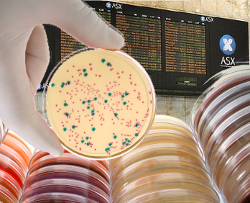Buy and cell; bacteria barter in microbial marketplace
 Buying low, selling high, hustling, hoarding and grifting - all attributes normally applied to human economic markets, but new research shows microbes and bacteria are known to hit the trading floor for a good deal too.
Buying low, selling high, hustling, hoarding and grifting - all attributes normally applied to human economic markets, but new research shows microbes and bacteria are known to hit the trading floor for a good deal too.
Studies in the US have shed light on the microbial marketplace – a place where sugars and nutrients are hot stock and picking the right time to buy or sell is crucial.
Microbes often have a two way relationship with their macro-scale host – but for the first time it has been revealed that the tiny creatures trade and cooperate amongst themselves as well.
“Although hidden from the naked eye, microorganisms are active in complex networks of trade, swapping nutrients, hoarding resources and bartering deals using many of the same strategies humans use to dominate markets,” Northern Arizona University scientist Nancy Collins Johnson says.
“While we know such ‘biological markets’ exist in nature between cognitive organisms - for example, when primates groom each other in exchange for food - it is difficult to imagine markets emerging on a micron-scale.”
In the new paper titled “Evolution of Microbial Markets,” researchers discuss the diverse economic strategies employed by microbes, including avoiding bad trading partners, saving for a rainy day and building local business ties.
The study says an economic market framework is a useful tool to generate specific and interesting predictions about microbial interactions, the evolution of partner discrimination, hoarding strategies, specialised versus diversified mutualistic services, and the role of the spatial structures they inhabit.
More information is available in the full report, accessible here.








 Print
Print